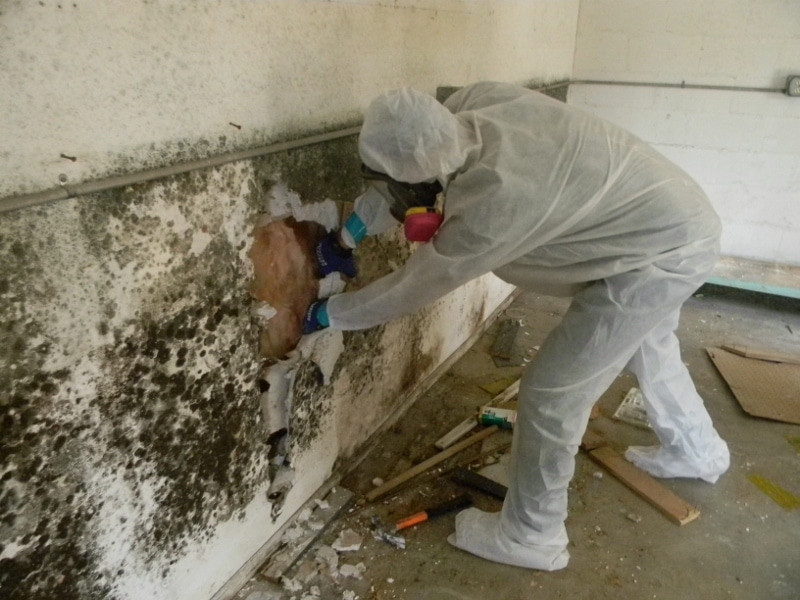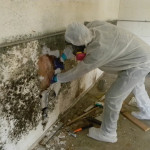Have you ever spotted an unsightly patch of mold on your drywall and wondered about the hidden damage it could be causing? Mold in your home is more than just an aesthetic issue; it’s a health hazard that can lead to significant costs if not addressed promptly. This article will guide you through the essentials of mold remediation, from detecting mold and understanding its causes to the step-by-step process of safely removing it. We’ll also help you decide when to call in the professionals and how to prevent future mold growth by managing moisture and sewage issues effectively. By the end of this read, you’ll be equipped with practical strategies to protect your living space and your health from the risks of mold damage.
Understanding the Risks of Mold to Your Home and Health
When it comes to maintaining a healthy living environment, understanding the risks associated with household mold is crucial. Identifying common types of mold is the first step in combating this silent intruder. Homeowners should be aware of the symptoms of mold exposure, which can affect both well-being and air quality. Additionally, it’s important to recognize the potential for structural damage that mold can cause. A mold and mildew remover, employed by a professional mold remediation company, can address these concerns. This section will delve into how mold takes root, often around air conditioning units or in areas with excessive dust, and the strategies for effective mold mitigation.
Identifying Common Types of Household Mold
When seeking mold remediation companies near me, homeowners often express a complaint about the presence of Aspergillus, Cladosporium, or Stachybotrys chartarum, commonly known as black mold. These varieties not only compromise indoor air quality but also pose significant health risks. A professional mold mitigation service near me can accurately identify these molds, ensuring that the remediation process is thorough and tailored to the specific infestation, thereby safeguarding both the structural integrity of the home and the occupants’ health.
Understanding the impact of mold on occupational safety and health is essential, particularly for those who spend considerable time indoors. Mold exposure can lead to respiratory issues, allergic reactions, and other health concerns, emphasizing the need for prompt and effective mold remediation. By engaging with reputable mold mitigation experts, individuals can restore their indoor air quality, creating a safer and healthier living or working environment.
Recognizing Symptoms of Mold Exposure
Recognizing the symptoms of mold exposure is pivotal for homeowners seeking “mold remediation near me.” Early signs often include respiratory discomfort, such as coughing or wheezing, especially in those with pre-existing conditions like asthma. When clothing or other fabrics harbor mold spores, skin irritation can also occur, prompting the need for professional mold abatement services to address the issue.
Unchecked mold growth, often stemming from a persistent leak, can escalate into a significant health hazard and become a liability for property owners. It’s essential for individuals to have liability insurance that covers mold-related damages and to engage with certified mold remediation specialists who can effectively restore the safety of their living environment.
Assessing Structural Damage Caused by Mold
Mold infestations, if left unchecked, can lead to significant structural damage within a home. The persistent presence of mold can weaken wooden support structures, compromise the integrity of drywall, and even corrode metal fixtures. Homeowners should be vigilant in identifying signs of water damage, as this often precedes mold growth. Engaging professionals equipped with HEPA filtration systems can ensure the thorough removal of mold spores, safeguarding the construction and longevity of the property.
During mold remediation, it is critical to adhere to safety protocols, including the use of personal protective equipment. Exposure to certain molds, like those that resemble asbestos in appearance, can pose serious health risks. Professionals trained in mold remediation will not only address the visible damage but will also implement preventative measures to protect against future water damage and mold growth. Their expertise ensures that the home remains a safe and stable environment, free from the hidden dangers of mold.
Detecting Mold in Your Living Spaces
Detecting mold in your living spaces is a critical step in maintaining a healthy home environment. Warning signs of mold presence, such as musty odors or discolored surfaces, often point to deeper issues with plumbing or humidity. Conducting a thorough home inspection can uncover hidden mold, especially after incidents like fire damage. Homeowners can utilize mold testing kits for initial assessments, but when indoor mold persists, seeking professional mold assessment is advisable. Experts with specialized training can provide a comprehensive evaluation and remediation plan.
Warning Signs of Mold Presence
Spotting the early warning signs of mold presence often requires a keen eye. Discoloration on wood surfaces or ceilings can be a telltale indicator, prompting homeowners to search for a “mold specialist near me.” A licensed professional can conduct a thorough mold assessment, identifying the extent of the infestation and the necessary steps to remediate it, ensuring the safety and longevity of the home’s structure.
Musty odors are another red flag that mold may be lurking in your living spaces. These smells often originate from hidden areas where mold thrives in moisture-rich environments. Homeowners experiencing these symptoms should act swiftly to engage a mold specialist, who can provide a comprehensive evaluation and devise a strategy to address the issue, protecting both the health of the occupants and the integrity of their home.
Conducting a Thorough Home Inspection
A thorough home inspection is a critical step in identifying mold risks within a property. It involves a meticulous examination of areas prone to moisture, such as basements, bathrooms, and around plumbing fixtures, to detect any signs of mold growth. Environmental protection agencies recommend that property owners seek professionals who use antimicrobial agents and biocides to treat and prevent mold. These experts can identify hidden mold, assess the risk to the property’s structural integrity, and recommend appropriate remediation strategies.
During the inspection, specialists focus on areas where mold is most likely to thrive, employing tools and techniques to uncover even the most inconspicuous mold colonies. They understand the importance of environmental protection and often use biocides cautiously, ensuring that the antimicrobial treatment eliminates the mold without posing additional risks to the occupants’ health. By addressing these concerns proactively, homeowners can maintain a safer living environment and protect their investment from the damaging effects of mold.
Utilizing Mold Testing Kits
Mold testing kits serve as an initial step for homeowners to detect potential contamination in their living spaces. These kits, which can be obtained from home improvement stores or laboratory services, offer a preliminary assessment of mold presence, guiding individuals on whether professional remediation is necessary. Especially after a flood, these kits can be instrumental in identifying mold not visible to the naked eye, providing peace of mind and a basis for insurance claims.
While these kits are useful, they are not a substitute for the expertise of a certified mold remediation specialist. A professional assessment ensures that all types of mold, including those that can cause disease, are accurately identified and effectively treated. Homeowners are advised to use these kits as a first step, followed by engaging with specialists who can confirm results and recommend a comprehensive approach to mold removal, ensuring the health and safety of the home environment.
When to Seek Professional Mold Assessment
Seeking professional mold remediation services becomes imperative when mildew’s musty scent pervades your space or when visible signs, such as discolored patches or persistent dampness, suggest an underlying issue. These professionals employ advanced techniques, including HEPA vacuum systems and strategic drainage solutions, to address mold at its source, ensuring a thorough cleanse of the affected areas. Their intervention is particularly crucial when DIY efforts fail to eliminate the problem, indicating a more extensive infestation that requires expert attention.
Homeowners should consider a professional mold assessment when health symptoms, such as unexplained allergies or respiratory issues, persist despite general cleanliness. Mold remediation experts can identify and eradicate hidden mold colonies, which often lurk in hard-to-reach spaces, behind walls, or under flooring. By doing so, they restore the air quality and safety of the living environment, providing residents with the assurance that their space is free from mold’s harmful impact.
Causes of Mold Growth Indoors
Moisture and humidity are the primary culprits in mold growth indoors, often necessitating professional mold cleanup. Poor ventilation exacerbates the issue, trapping damp air in places like the basement, where mold thrives. Common household sources, such as leaky pipes or condensation, contribute to these conditions, making the expertise of a mold remediation contractor essential. Employing a dehumidifier and ensuring proper airflow are key steps in restoration and maintaining a mold-free environment.
The Role of Moisture and Humidity
Moisture and humidity are the twin forces that create a hospitable environment for mold to flourish indoors. An inspection that reveals high humidity levels often precedes the need for comprehensive mold treatment. Homeowners should be vigilant about maintaining low humidity, as this can prevent the proliferation of mold spores, reducing the frequency and severity of mold cleaning services required.
Effective mold remediation includes the use of disinfectants and, in some cases, repainting surfaces with mold-resistant paint to create a barrier against future growth. These measures, when applied by professionals, can significantly mitigate the risk of mold taking hold. It’s essential for individuals to understand that controlling indoor moisture through proper ventilation and dehumidification is a proactive step towards maintaining a healthy home environment.
Impact of Poor Ventilation
Poor ventilation can significantly exacerbate indoor mold issues, particularly in areas like the attic or basement where air circulation is limited. Without adequate airflow, moisture accumulates, creating an ideal breeding ground for mold. Professional mold services often address these concerns by implementing water damage restoration techniques and improving ventilation to prevent future mold growth.
When mold takes hold under floors or in the rafters of a roof, it’s a clear sign that ventilation is insufficient. Mold removal experts understand that enhancing air exchange is as crucial as the removal process itself. They often recommend solutions such as installing vents or dehumidifiers to maintain a dry environment, thereby reducing the risk of mold recurrence and safeguarding the health of the home’s inhabitants.
Common Household Sources Contributing to Mold
Condensation on windows and pipes is a common household source of moisture that can lead to mold growth. The United States Environmental Protection Agency emphasizes the importance of moisture control as a key factor in mold prevention. Homeowners should regularly check areas where condensation is likely to occur, ensuring that surfaces are dry and well-insulated to prevent the accumulation of moisture that molds require to thrive.
In the event of an emergency, such as a flood or a burst pipe, swift action is necessary to mitigate water damage and prevent mold from taking hold. Wearing gloves and other protective gear, homeowners should immediately address waterlogged areas by removing excess water and promoting rapid drying. This proactive approach aligns with the regulation guidelines set by the United States Environmental Protection Agency, aiming to protect homes from the insidious spread of mold.
Conclusion
Mold remediation is essential for maintaining a healthy living environment, as unchecked mold can lead to significant health issues and structural damage to your home. Professional assessment and removal are critical when dealing with extensive infestations, ensuring the safe and effective eradication of mold. Implementing preventative measures, such as controlling indoor moisture and improving ventilation, can significantly reduce the risk of mold growth. Ultimately, taking proactive steps towards mold remediation and prevention safeguards both the well-being of your household and the integrity of your property.







